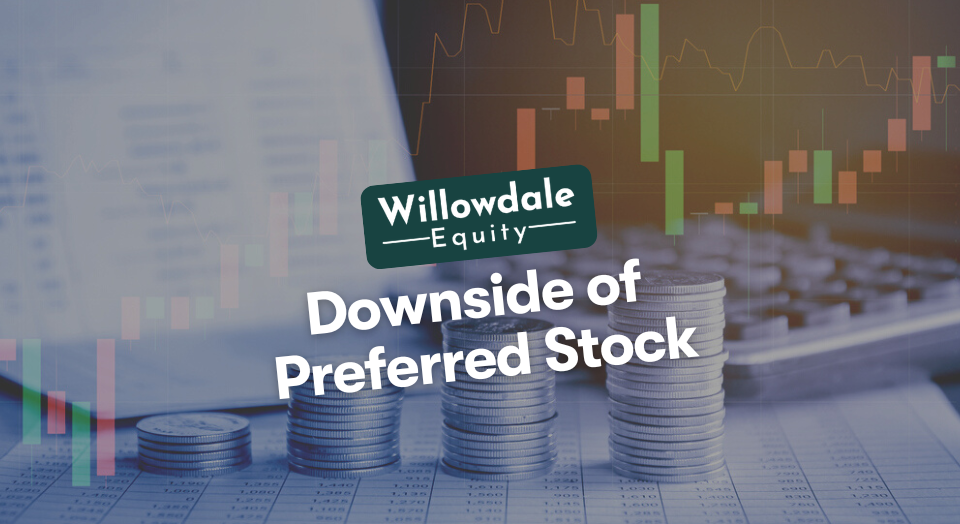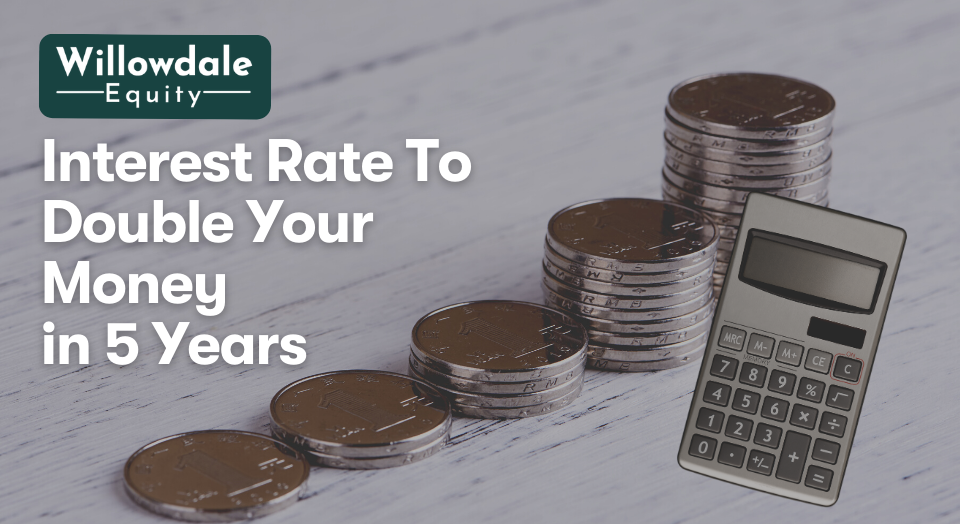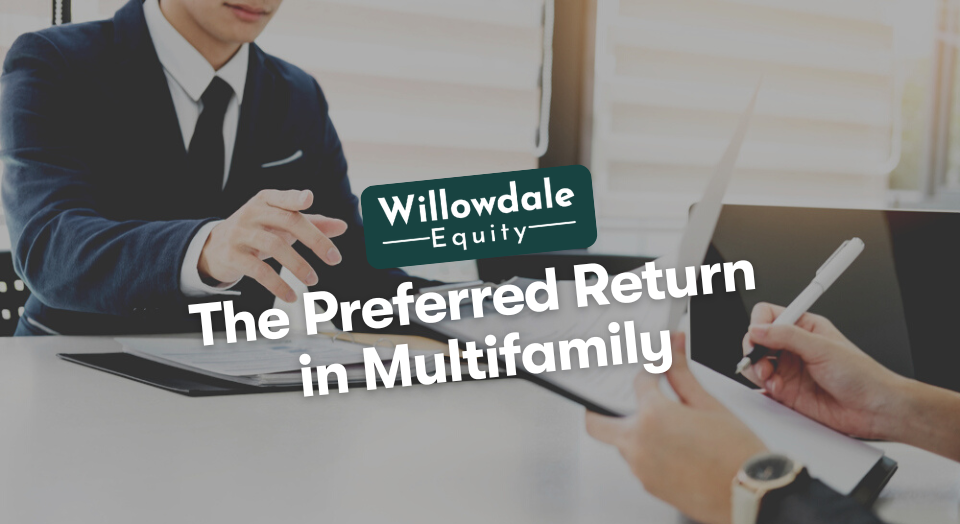
What is the Downside of Preferred Stock?
This article is part of our passive investors guide on real estate syndications, available here.
If something is described as “preferred,” you likely assume it is superior to a “common” version. That might or might not be the case, depending on how you invest in stocks. Unlike common stock offered by the same organization, preferred stock earns certain special privileges, especially regarding dividend payouts. However, unlike bond payments, preferred stock payments are not guaranteed.
Is this the only downside of preferred stock shares? We look to answer this by explaining what preferred stock is; if buying preferred shares is a good investment, and the downsides of owning preferred stock.
Key Takeaways
-
Preferred stocks are a good option for investors seeking better returns than bonds and possibly more significant dividend payments than common shares.
-
Preferred stockholders typically have little influence over a company’s critical decisions and voting since preferred shares rarely have the right to vote (when they do, those powers are typically restricted).
-
The preferred stock offers lower levels of market risk than common stock but at the expense of little change in the asset’s equity value. When the company is profitable, you receive a return from fixed dividends.
What Is a Preferred Stock?
Similar to standard (or common) stock, preferred stocks are shares of a corporation, but they come with additional shareholder safeguards. For instance, when it comes to dividend payments, preferred owners receive preference over common stockholders.
Additionally, preferred stockholders have a better standing in the business’s capital structure, which means they will receive payment before common shareholders in the event of asset liquidation. Preferential equities are, therefore, often thought to be riskier than regular stocks but less volatile than bonds.
Although there are countless options, preferred stocks generally fall into three categories.
Most preferred stock is cumulative, meaning that if the business withholds any portion of the preferred stock dividends you anticipate, those dividends are in arrears. The company must pay them to you before any additional dividends.
The second common type of preferred stock is callable preferred stock. These come with a prospectus that often specifies a date and price at which the issuer may redeem the stock.
The next most common type of preferred stock is convertible preferred stock. The prospectus for the preferred shares will set the conversion date and price applicable to each issue.
The fourth and final common type of preferred stock is participating preferred stock. This preferred stock pays dividends at a fixed rate. These stocks can earn more than their specified rate of return if the company offers participating preferreds.
The majority of preferred don’t participate. So, are any of these preferred stocks a good investment? We will discuss that next.
Are Preferred Shares a Good Investment?

The answer depends on how much risk you can take and your investing goals, just like any other investment. Preferred stocks are a good option for investors seeking better returns than bonds and possibly more significant dividend payments than common shares.
Preferred stock is, in general, riskier than corporate bonds but safer than common stock. For investors who desire a respectable return but don’t want the unpredictability of common stock, preferred stock is a viable option. Preferred stocks typically have capped upside, meaning their price fluctuates less than regular stocks.
There is more potential for more significant profit if the most preferred stock is bought at a considerable discount. Still, investors must do their homework to identify these opportunities. Overall, investing in a preferred stock has more downsides than benefits. What are the downsides of investing in a preferred stock? They are detailed in the next section.
Good Read: Is a Preferred Return a Guaranteed Payment in Private Real Estate Investing?
What Is the Downside of a Preferred Stock?
Preferred stockholders typically have little influence over a company’s critical decisions and voting since preferred shares rarely have the right to vote (when they do, those powers are typically restricted).
Furthermore, there is less possibility of preferred shares increasing significantly in value in response to a company’s success as they are less erratic than other types of stock. The following are the reasons you may want to avoid investing in preferred stocks.
1.) No Voting Rights
Like common stock, the preferred stock provides the holder with a stake in the company. The board of directors of a corporation is not required to give the right to vote to its preferred stock, though it may choose to do so. The majority of preferred stock does not grant the holder voting privileges at the annual meeting of preferred shareholders.
2.) Interest Rate Sensitivity
The company typically issues preferred stock to raise money without adding to its debt load. Both are usually referred to as fixed-income securities because they pay a fixed dividend, like how bonds provide a fixed interest rate.
Preferred stocks are susceptible to changes in market interest rates, just like bonds. The market rate of preferred stocks often decreases as rates rise. In general, preferred stock prices generally rise when current rates decline.
3.) No Growth in Dividends
The preferred stock offers lower levels of market risk than common stock but at the expense of little change in the asset’s equity value. When the company is profitable, you receive a return from fixed dividends.
Even if interest rates rise, it is unlikely to impact your share value significantly; it also doesn’t increase when circumstances are good. This approach might not be your first choice if you’re hoping for speedy development to compensate for a retirement fund or any other financial need.
4.) Guaranteed Dividends May Not Get Paid
Since preferred stock often provides a more significant dividend than common stock dividends the same corporation offers, investors purchase it. Preferred investors get first dibs on firm assets in a liquidation, followed by bondholders. Even though a preferred stockholder receives dividends ahead of common stockholders, this is not a guarantee. A struggling business may choose not to pay any dividends at all.
5.) Limited Upside
Preferred shareholders can obtain a fixed dividend rate with their stock, but it is not guaranteed. This asset operates more like a bond than it does like a stock because it might even be redeemed at the issuer’s discretion. In other words, unless you as an investor have access to the conversion function, the shares don’t react to increasing company earnings as common stocks do.
We have covered all bases regarding who is the downside of preferred stock. However, a few frequently asked questions (FAQs) regarding if preferred shares are a good investment need to be answered. That is what we will be doing next.
Frequently Asked Questions about If Pref Shares Are a Good Investment
Preferred stock prices increase when interest rates are low and decrease when they are high. As interest rates decline, the yield provided by a preferred stock’s dividend payouts becomes more alluring, increasing investor sentiment and driving up the preferred stock market value.
Preferred stocks are less risky and offer more stability than common stocks. The preferred dividends are prioritized over those on the common stock, albeit this is not a guarantee. If a firm cannot afford them at any time in the future, it may not pay back the dividend to you.
Preferred Stock's Downside - Conclusion
In actuality, preferred shares carry a moderate risk and offer a reasonable return. However, despite all the downsides of a preferred stock mentioned above, preferred shares are typically regarded as a secure investment because they generally are issued by businesses in the banking and financial industry, which are less likely to default than other businesses.
Join the Investors Club at Willowdale Equity if your interested in getting access to private risk-adjusted value-add multifamily investment opportunities across the southeastern United States.
Sources:
- Investopedia, “How Does Preferred Stock Work?”
- Investopedia, “Preference Shares: Advantages and Disadvantages”
- NerdWallet, “What Is Preferred Stock?”
Interested In Learning More About PASSIVE Real Estate Investing In Multifamily Properties?
Get Access to the FREE 5 Day PASSIVE Real Estate Investing Crash Course.
In this video crash course, you’ll learn everything you need to know from A to Z
about passive investing in multifamily real estate.
We’ll cover topics like earned income vs passive income, the tax advantages, why multifamily, inflation, how syndications work, and much much more!




